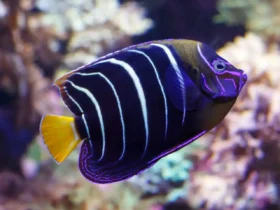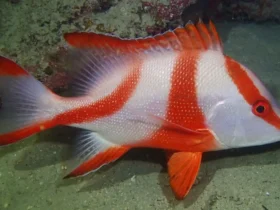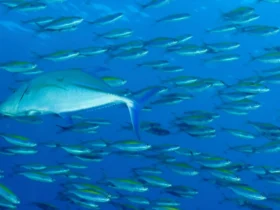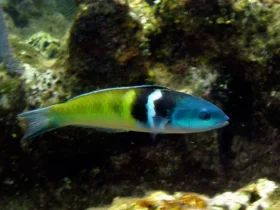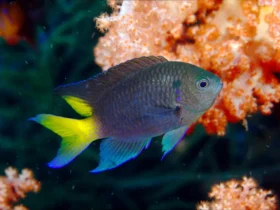Beneath the turquoise waters of coral reefs, an extraordinary creature captures the attention of divers and marine enthusiasts with its striking appearance and graceful movements. Meet the Harlequin Sweetlips (Plectorhinchus chaetodonoides), a species of fish known for its vibrant colors and distinctive patterns. In this article, we will delve into the captivating world of Harlequin Sweetlips, exploring its unique characteristics, habitat, and the importance of preserving these underwater wonders.
Harlequin Sweetlips images















Appearance and Coloration
The Harlequin Sweetlips is a medium-sized fish that boasts an eye-catching and intricate coloration. Its body is primarily yellow with irregular patches and bands of black, resembling a mesmerizing harlequin pattern. The dorsal fin displays a splash of bright yellow, while the pectoral and pelvic fins are a striking black color. These bold and contrasting colors contribute to its undeniable allure and make it stand out amidst the vibrant coral reef ecosystem.
Habitat and Distribution
Harlequin Sweetlips are native to the tropical waters of the Indo-Pacific region. They can be found in the Red Sea, the coasts of East Africa, and extend eastward to the waters of the Philippines, Indonesia, and northern Australia. These fish inhabit coral reefs, often seeking shelter among the crevices and caves formed by the intricate coral structures.
Behavior and Feeding Habits
Harlequin Sweetlips are nocturnal hunters, seeking prey under the cover of darkness. During the day, they can be observed resting motionlessly near the coral reefs, relying on their unique coloration to blend with their surroundings and evade predators. As night falls, they venture out to feed on small fish, crustaceans, and various invertebrates.
These fish possess specialized pharyngeal teeth that allow them to crush hard-shelled prey, such as crabs and mollusks. Their feeding habits play a crucial role in maintaining the balance of the coral reef ecosystem, as they help control the population of these small organisms.
Conservation and Threats
Like many marine species, Harlequin Sweetlips face numerous threats that impact their populations and the health of their habitat. Coral reef destruction due to climate change, pollution, overfishing, and destructive fishing practices pose significant challenges. The delicate balance of the ecosystem and the availability of suitable shelter and prey are crucial for the survival of these remarkable fish.
Conservation efforts, including the establishment of marine protected areas, sustainable fishing practices, and public awareness campaigns, are essential for the preservation of coral reefs and the diverse marine life they support, including the Harlequin Sweetlips.
Ecological Importance
Harlequin Sweetlips play a vital role in coral reef ecosystems. As part of the food chain, they serve as predators that help control the population of smaller organisms, contributing to the overall balance and health of the reef. Additionally, their vibrant colors and unique patterns make them a source of inspiration and wonder, attracting tourists and divers who contribute to the local economies of coastal communities.
The Harlequin Sweetlips, with its mesmerizing colors and elegant presence, exemplifies the captivating beauty and biodiversity found within coral reef ecosystems. Understanding and appreciating the importance of these remarkable creatures is crucial for their conservation and the preservation of their fragile habitats. By taking steps to protect coral reefs and promoting sustainable practices, we can ensure that future generations will continue to marvel at the enigmatic beauty of the Harlequin Sweetlips and the treasures of the underwater world.

